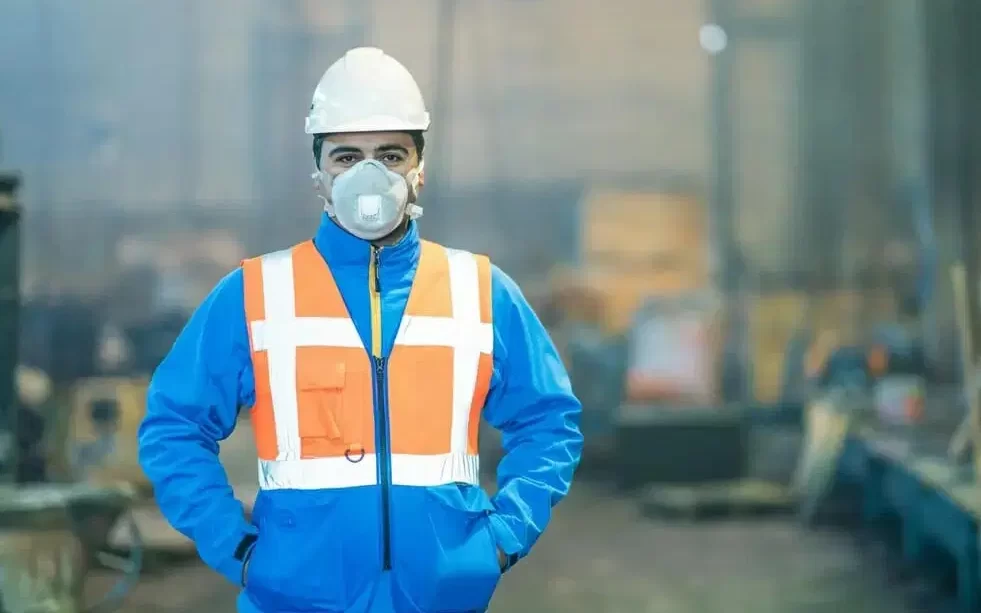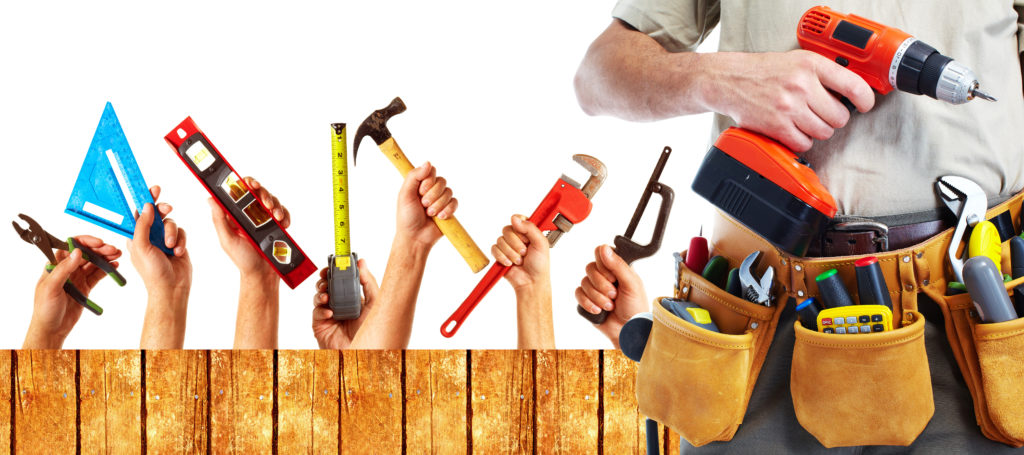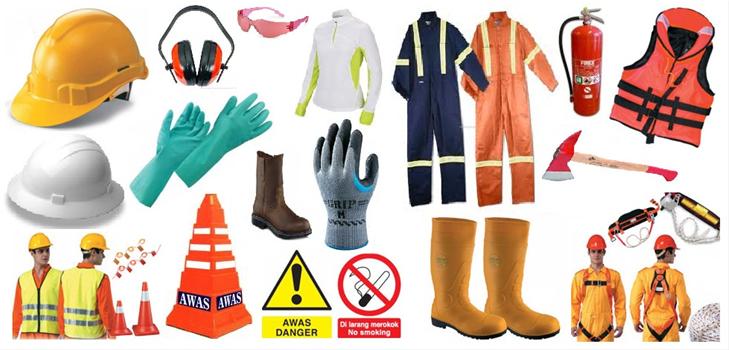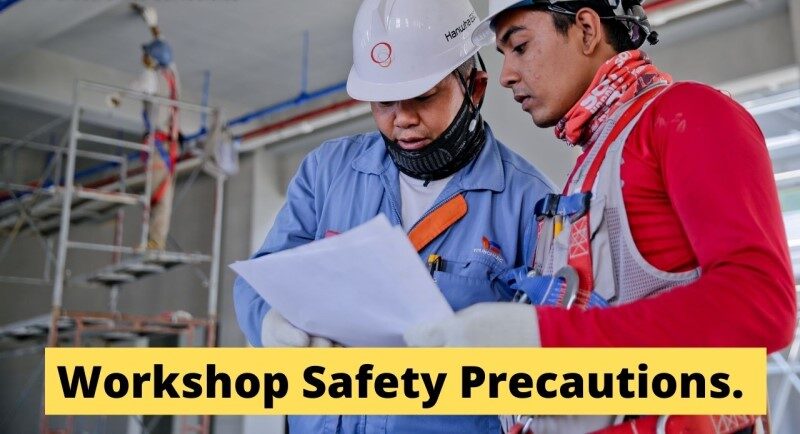For any job, safety equipment is required. Nowadays people’s life is more and more modern and workers also work a lot to improve development. Occupational safety comes first and companies also uphold this when they are under construction as well as during operation. Companies must provide adequate safety equipment for their workers. If you want to know more, guardboots invite you to the question ‘What are the types of safety equipment?‘ We will introduce some types of safety equipment in this article.
What is safety equipment?
Safety equipment, in the simplest terms, refers to tools and personal possessions that assist employees in avoiding risks at work. Different jobs have different risks and different safety equipment. Usually, safety equipment is reserved for workers to wear to protect themselves. It’s called Personal Protective Equipment (PPE).
For instance, when performing work involving the manipulation of welding, cutting, and other machinery, employees’ hands must always be careful to avoid injury at the hands of the machine. Respiratory protective equipment is necessary for jobs that need exposure to a lot of poisonous gases; otherwise, it may be dangerous to the employees’ life.

In addition to PPE, Safety Supplies can take the form of safer tools or devices that warn workers about exposure to harmful materials. These gadgets can track exposure to dangerous substances or keep an eye on environmental aspects like air quality. Utility services can also help workplaces keep their staff members secure.
Safety devices also function as warning devices, such as warning lights and warning signs posted close to dangerous spots and areas. For instance, along junctions and construction sites… to warn people to keep clear in order to protect human life. When a given project is put into construction, fire protection is usually a task that is prepared. Fire prevention support tools and safety equipment like fire extinguishers are essential.
Preventive measures that take into account human factors
When participating in any project or job, you should know how healthy and capable you are. If you are still not sure about your health status, visit the nearest hospital or health station to check. The outcome of this will help you figure out whether or not you should start working on it.
Nowadays, many companies also require proof of good health to do the job well. They also have employee benefits that include routine physicals. For jobs that come in contact with dangerous things, you should consider carefully.

The requirements could be:
- Avoid awkward postures that could result in spinal injuries during labor manipulation. Lift and transport large goods in accordance with safety principles.
- Make sure there is room for mobility and manipulation within the range of the human body (sustainable working posture, convenient conditions with control mechanisms, seats, standing platforms, …).
- Check the visibility (ability to clearly see the working process, clearly see the means of signaling, symbols, diagrams, colors, safety structures, …)
- Make sure your physical and mental load is suitable; stay away from overload or boredom.
What are the types of safety equipment?
Personal protective equipment
Worker body protection from the effects of hazardous elements is provided by personal protective equipment. Your employees run the risk of serious damage or disease without the right PPE, including radiation exposure, chemical burns, electric shock, and other hazards.
The Health & Safety Executive (HSE) states that all companies are required to offer appropriate PPE and instruct their personnel on how to use it appropriately when confronted with a possible health and safety risk. The Occupational Safety and Health Administration (OSHA) suggests various protective equipment depending on the hazard or working conditions to control or reduce the risk as much as feasible.

Divided into main groups:
- Equipment for eye protection: clear goggles, colored glasses, welding glasses, etc.
- Masks, respirators, filter-equipped masks, and other respiratory organ protection equipment
- Hearing protection tools, such as noise-canceling earplugs and earcups
- Head protection gear includes fabric, plastic, iron, and hard or soft hats, as well as mining, sun, rain, and fireproof helmets.
- Gloves of many types are available as hand protection equipment.
- Foot protection gear, including heavy boots and slippers.
- Equipment for body defense: regular, heat- and fire-resistant protective clothes,…
Workers’ eyes are shielded from potentially harmful foreign objects by safety eyewear. A welding helmet with a safety shield or welding goggles are preferable for people who must operate around infrared radiation, welding, or other bright lights.
A mask should be worn at all times by employees who may be exposed to respiratory threats. If employees often come into contact with dangerous vapors, they should wear respirators.
Long-term exposure to noise levels beyond 70 dB can start to harm your hearing, and anything over 120 dB can be dangerous right away. A hearing protection device should be worn by employees who are exposed to loud noises in industrial settings.
Workers are shielded from falling objects by wearing hard helmets or caps. Depending on the profession or the employee’s taste, these products may come in a variety of designs. Others come with a sweatband or inner harness.
Gloves are a crucial component of personal protective equipment (PPE), as they can guard against lacerations, heat, chemicals, and other hand injuries that are all quite prevalent. In accordance with the job purpose, the glove’s material and thickness should offer protection.
Depending on the workplace, different safety shoes are available. To protect their feet from harm, industrial employees should wear steel toed shoes. Wearing footwear with anti-slip soles is recommended for workers who frequently slip and fall at work.
Safety clothing must be resistant to water/fire/chemicals or other harmful agents. Depending on your job and working environment, you should wear appropriate and adequate safety clothing. Besides, the color of safety clothing should also be emphasized, it should be vibrant/reflective colors for high visibility.

Types of Safety Tools
Tools that are non-conductive are necessary for electrical workers. These tools protect the user from shock or electrocution if an electrical cord is encountered because they are made of non-conductive materials.
The right gloves can help prevent employees from cuts when they handle sharp objects. However, choosing safer blades might offer added defense against unintentional cuts.
When possible, workers who regularly use hand tools should switch to more convenient ones. These tools are more comfortable to wield for extended periods of time without wearing out or resulting in strain injuries that are challenging to treat.
Safety shielding equipment
A safety shielding device is a tool that keeps people away from dangerous areas, isolates spinning and moving objects that could be dangerous, and keeps people from coming into touch with or entering dangerous areas. Closures, nets, and barriers are all acceptable forms of shielding.
Equipment for shielding can include:
- In insecure workplaces, there are temporary shielding devices (eg: repair sites, equipment installation, …)
- A constant shield (for moving machine parts such as belts, gear drives, chains, rotating screws, transmission shafts, transmission joints, …)
- Knives, speed boxes, reducers, and other closed-type items
- Typically formed of wire mesh or steel and fastened to the frame to protect the drive belt, chain guard, and feed roller mechanics, open type devices are utilized for devices that require monitoring and examination of internal details. Embryo…
- A radiation monitor is a gadget that attaches to clothing and beeps when it detects dangerous radiation exposure levels.
- Where dangerous chemicals like carbon monoxide or nitric oxide are employed, air quality monitors are used. These sensors are hung close to the boxes to help find leaks and sound an alarm when gas concentrations become hazardous.
- When gas leaks from a line, a liquid known as a leak detector bubbles.
- Plexiglass or other more effective barriers are used to keep personnel away from potentially hazardous chemicals.

Devices and precautions
The purpose of devices and safeguards is to stop equipment breakdowns that could endanger workers’ safety while at work. Various technological factors may contribute to device failures. For instance, because of overload, moving a part past the maximum position, overheating, or moving at a speed or amperage that is greater than the permitted limit,…
When a given parameter exceeds the permitted limit, the preventive mechanism’s job is to immediately shut off the machine, piece of equipment, or component of the machine. No piece of machinery is deemed finished or put into service without the necessary safeguards.
Assuming a return to work is possible, the preventive structure is separated into three categories:
- Systems that have the ability to recover themselves after the test parameter has returned to the desired level (such as friction clutch, lug clutch, spring, thermal relay, counterweight or spring type safety valve, …).
- System components including fuses, cut-outs, and other components are replaced with new ones to restore their functionality. These parts of the system are frequently its weakest link.
- Systems for manual recovery: circuit breakers, relays,…
Confined Space Equipment
Working in cramped areas can be risky, especially when working with toxic gases, harmful chemicals, and other potentially fatal risks. To keep you and your colleagues as safe as possible while working in cramped, hazardous areas, you require confined space equipment. You and your workers will be protected with the aid of respirators and gas detectors, for example.

Safety signals
Devices called safety signals alert workers to potential machine damage or impending machine operation issues so they can take appropriate safety measures and deal with the issue as soon as it arises.
Light (color) or music can be the signal:
- Red, green, and yellow lights are the three basic color-coded light signals. Green is a safe color, while red indicates an electric current with a dangerously high voltage.
- Whistle and bell are commonly used as audio signals. Forklifts, automobiles, alarms, etc. are all examples of uses for this.
Warning sign
Warning signs serve as a reminder to pedestrians to use caution when crossing risky areas or to block access.
Three different kinds exist:
- Message: “Deadly Danger,” “STOP,”…
- “High-voltage area, do not approach,” “No power on, under maintenance,” “No smoking,” etc. are prohibited signs.
- Working space, isolation zone, warning sign, etc.
Solutions to ensure machine and equipment safety

Choose to buy a really safe machine
- Be sure to completely cover any cutting, punching, trimming, and bending operations on the transmission’s shaft, wheel, roller, and pulley.
- Parts that pose a risk to workers are positioned away from them;
- With an automated stop or two-handed operation:
- Devices that automatically stop a machine (interlocks can lock out before a machine cycle and can stop a machine if guards or covers are opened or removed);
- When employees often introduce objects into a machine while it is running, accidents frequently happen. As a result, if you want to use the machine with both hands or just one hand, the manufacturer designed the control unit with two push buttons that may be used simultaneously.
Check the machine’s manufacturability
Travel to the production area frequently each day to check:
- Is there a machine that needs to be repaired or that has a condition that makes it unsafe?
- Do any machines have low productivity that can be attributed to the product or material dispensing department?
- Has the machine guard been altered, destroyed, or taken off?
Use of loading and unloading equipment
devices for safe operation that automatically feed ingredients or distribute products. This not only greatly lowers occupational accidents but also saves money by not having to install the required safety equipment and protective pieces and boosts labor productivity.
Equipment for material handling or product discharge comes in a wide variety of forms. Here are some straightforward groups:
- Push-button feed plunger control device;
- Manual feeder with compartment that pulls in;
- A sliding table self-feeding unit;
- A feeding table that rotates;
- An inclined slide feeding apparatus.
Use the right type of shield
- The guard is securely fastened to the machine and can only be taken off for maintenance;
- To stop the thing from blasting out, cover the machine’s moving portion;
- Workers’ views are not obstructed by shielding.
Regularly maintain the machine
- The machine is repaired or maintained by a qualified and competent person;
- Keep your guard up as well;
- The device should be properly labelled with the phrase “Danger, do not operate” when it is being fixed or maintained.

Wrapping up
Safety equipment includes tools and apparatus that guard against potential production-related mishaps and shield workers from potentially dangerous elements (such as radiation, radioactive,…). Depending on the task at hand and the environment, a worker may require a variety of tools.

